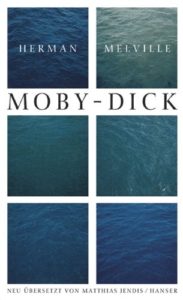Archives: September 2016
Dana Scully: What are you talking about?
Fox Mulder: Some cannibalistic rituals are enacted with the belief that they can prolong life.
Dana Scully: Cannibalism is one thing, but increasing longevity by eating human flesh …
Fox Mulder: Think about it. From vampirism to Catholicism, whether literally or symbolically, the reward for eating flesh is eternal life.
(dialogue taken from „The X-Files“, season 2, penultimate episode, Our Town – recently, the whole „X-Files“ have been remastered, the visual/audio quality of the blu ray-reissues is impressive – one of the great TV-shows of the last decade of the last century has aged with dignity, and grim humour.)
2016 21 Sep.
The long way to the thrill of it all
Michael Engelbrecht | Filed under: Blog | RSS 2.0 | TB | 2 Comments
2016 21 Sep.
If I Ever Was A Child
Manafonistas | Filed under: Blog | RSS 2.0 | TB | Tags: Schmico, Songs & lyrics, Wilco | 6 Comments
I’ve never been alone
Long enough to know
If I ever was a child
I was tied up like a boat
Unbuttoned like a coat
Set free for a while
Well I jumped to jolt my clumsy blood
While my white, green eyes
Cry like a window pane
Can my cold heart change
Even out of spite?
And I cry like a window pane
Can my cold heart change
Over night?
So I won’t ever want to touch
Your heart too much
Or hold you too tight
I slump behind my brain
A haunted stain will never fade
I hunt for the kind of pain I can take
I never was alone
Long enough to know
If I ever was a child
2016 20 Sep.
Kitsch turning into comfort
Michael Engelbrecht | Filed under: Blog | RSS 2.0 | TB | Comments off

Brian Eno alluded to his love of heavy metal* and cited the Velvet Underground, a band that „wouldn’t have passed a single audition,“ as one of his biggest influences. He contrasted rock’s anarchic character with classical music’s hierarchical structure. „This music doesn’t come from above, it comes from below, it comes out of the ground,“ he said. „It’s not an accident that a whole revolution in how we think about gender and sexuality has happened in the last 50 years, because there has been a whole lot of art about it as well, David Bowie not least. There’s been a whole conversation, really, about who people could be, about what you were allowed to be.“ He pointed to Anohni, a Sonar headliner this year, as „a very good example of someone who has held this conversation.“
* I doubt Brian has a big heavy metal collection, but he loves some of those bands, maybe – btw, it would be strange to call the Velvet Underground a metal band, in spite of Lou’s solo Metal Machine Music. Speaking of Metal traditions, Brian actually loves the quality of immersion in sound, some of the walls of sound of Metal’s darker genres have been striving for a long time. And successfully so, at least if they didn’t wrap it around reactionary politics, satanism and similarly fucking mess … And, yes, the anarchy element of rock has been sabotaged (at least in parts) from the beginning, from all sides, but there have been those people, too, and smaller companies, communities who simply followed their vision, gave a shit on expectations, loved resistance, and banned nostalgia. And, thanks to people not trapped in the hierarchcal structure of classical music, even this music from the days of old can get rid of its ridiculous „peak of the mountain“-views.“ For example, you play „Misty“, you play „For Alina“, you play „Skeleton Tree“, alone at home. And of course you stop thinking in higher and lower arts. First lesson for musicians who don’t want to turn into complete idiots or Scientologists. Not to be misunderstood, the impact of rock music on our lives within the last 50 years has been far superior to the world of classic music lovers and Bayreuth pilgrims. And fir all the good reasons. You remember old fashioned music teachers who bored us to death with fucking Freischütz?! (m.e.)
2016 18 Sep.
Gregor öffnet seinen Bücherschrank
Gregor Mundt | Filed under: Blog | RSS 2.0 | TB | 6 Comments
Herman Melville: Moby-Dick
Schon öfter habe ich meine Schüler mit der Erzählung Bartleby von Herman Melville (1856) verblüfft, eine Geschichte von einem Totalverweigerer. Sein andauerndes I would prefer not to … ( „Ich möchte lieber nicht …“ ) provoziert scheinbar dermaßen, dass es meinerseits ein rechtes Vergnügen ist zu erleben, was 150 Jahre alte Literatur noch alles vermag. Ein wunderbares Büchlein, welches in den verschiedensten Ausgaben erhältlich ist, die schönste ist sicher die 2005 in Steidl-Verlag erschienene und mit einem Nachwort von Wilhelm Genazino versehene Ausgabe.

Die 1954 entstandene, unter der Regie von John Huston beeindruckend in Szene gesetzte Verfilmung des Romans Moby Dick (von Melville 1851 veröffentlicht) – in der Hauptrolle des fanatischen Kapitän Ahab übrigens Gregory Peck – hat mich immer wieder dazu angeregt, doch endlich einmal dieses Hauptwerk Melvilles zu lesen. Im gerade zu Ende gehenden Sommer war es dann soweit. Die Ausgabe in der Neuübersetzung von Mathias Jendis schien mir die geeignetste, um das Werk anzugehen. Ich wurde nicht enttäuscht, die Übersetzung ist großartig. Die 1041 Seiten umfassende Dünndruckausgabe enthält neben dem eigentlichen Romantext (866 Seiten) ein Glossar ausgewählter nautischer Begriffe, fast 100 Seiten Anmerkungen, darin enthalten: kultur- und literarhistorische Anmerkungen zum Romantext, Zitate aus Melvilles Briefen, Tagebüchern und Bezüge zu seinen anderen Werken; es findet sich auch eine ausführliche Zeittafel zur Biographie Melvilles. Das Buch umfasst 135 Kapitel und, wer nun auf Grund der Kenntnis der Verfilmung des Buches glaubt, ein Abenteuerschmöker lesen zu können, wird recht bald eines besseren belehrt. Bevor unser Walfangschiff ablegt, vergehen schon einmal fast 200 Seiten.
Aus der Sicht des Matrosen Ismael erfahren wir zunächst einmal alles über das Gasthaus „Zum Walfänger“, über den unheimlichen Zimmergenossen Ismaels, den Harpunier Queequeg, das Frühstück, den Abschiedsgottesdienst – die komplette Predigt wird dem Leser präsentiert -, das Anheuern auf der Pequod, natürlich ausführliche Beschreibungen des Walfängers und Personenbeschreibungen in einer Breite, wie ich sie ansatzweise schon in dem oben genannten Büchlein Bartleby gelesen habe. Oft musste ich während des Lesens an das Buch Leben und Ansichten von Tristram Shandy, Gentleman (1759-1767) von Laurence Sterne denken, auch hier will und will ja die Handlung nicht weitergehen und der Leser denkt: „Hallo, was passiert hier eigentlich?“
Es passiert wirklich nicht viel, jedenfalls solange nicht, bis es dann am Ende des Romans, ab S. 824 zur Jagd auf Moby Dick kommt. Aber, was lernt der Leser nicht alles in diesem Meisterwerk über den Walfang in der Mitte des neunzehnten Jahrhunderts, über Wale überhaupt, die unterschiedlichen Unterordnungen des Wales, seine Lebensart, seine Anatomie, seine Farbe – unglaublich etwa die 13 Seiten über das Weiß des Wals und die „Farbe Weiß“ als solche – seine Verarbeitung, über Tranöfen, Lampenöl, über Festfisch und Losfisch, Theologie und Philosophie, Exkurse über Exkurse. Und doch, das Buch fesselt, die Sprache begeistert, was für ein tolles Buch! Herman Melville starb 1891, den Erfolg seines Buches Moby-Dick konnte er nicht mehr erleben …
Susan Spano reports that, among such fabled roads as California 1 in Big Sur, U.S. 395 on the eastern flank of the High Sierra and California 29 through the Napa Valley, California 46 keeps a pretty low profile. But between the nascent wine town of Paso Robles and oceanfront Cambria, it’s about as fine a drive as can be, cutting for 40 miles across mounded Thomas Hart Benton hills.
In spring there are wildflowers, and just about every turn leads to a pocket of wineries (including family-operated Fratelli Perata on Arbor Road), where you can sample the region’s highly prized Zinfandels, Cabernet Sauvignons and Pinot Noirs.
But be warned: Highway 46 turns eerie east of Paso Robles, winding through lonely, brooding country on its way to the Central Valley. Known in those parts as „Blood Alley,“ it’s infamous for fatal accidents, including the head-on collision near the hamlet of Cholame that killed 24-year-old James Dean on Sept. 30, 1955. Now, with a Manafonista around who might have been on that road once in a while, some of our favourite themes might cover new ground. Don’t be afraid of a different soundtrack then! Though Daniel Lanois‘ „Goodbye to Language“ might be part of the game.
2016 17 Sep.
How to become a famous musician / sculptor / dancer
Martina Weber | Filed under: Blog | RSS 2.0 | TB | Comments off
This is a shelfie of Jon´s media rack. Jon lives anywhere, everywhere. He wants to get his fifteen minutes, and even more: he fears to be forgotten, lost. He plays the guitar, he is young, so he starts to become a musician. So, firstly he collects his favourite current songs, to be part of zeitgeist. Jon is dissatisfied as an employee, but this will change. The guidebook said, try and start with your surroundings, so Jon is alert in watching it all, here a woman in a black dress, there the emptiness of it all. But where does real art come from? How do you recognize an excellent song? Does creative possibility lies in crisis? Has anyone who writes beautiful music suffered torture? Is it about facing your fears? Touch yourself, says the black swan to the white one. Loose control, says the girlfriend. You might live in the woods for months. You might have time, solitude, a room and your hands. But. Embrace your very reverse. Did you notice the billiard playing dogs? The restroom´s stench? One outstanding thread in a carpet? Let it be on the dancing floor. And love it all.
Lenny Abrahamson: Frank (movie)
Scott McCloud: The sculptor (graphic novel)
Darren Aronofsky: Black Swan (movie)



